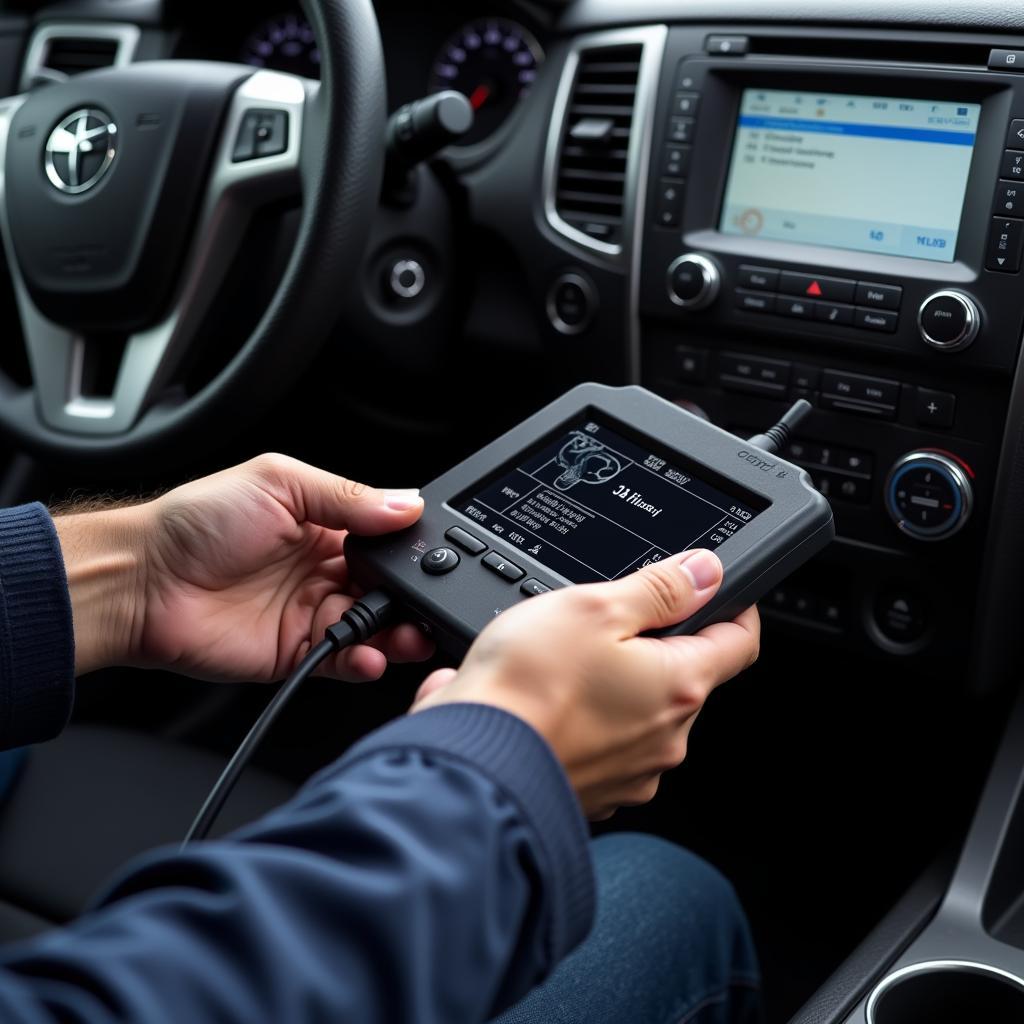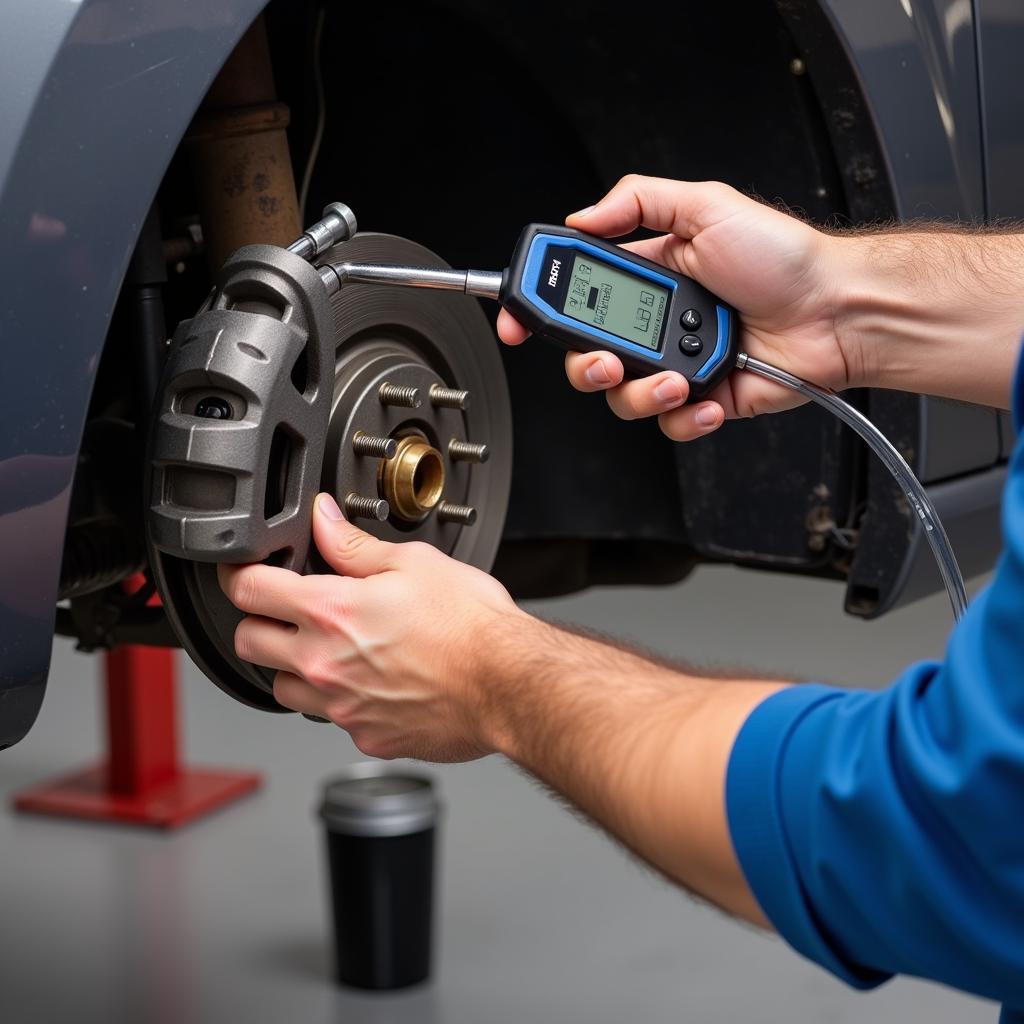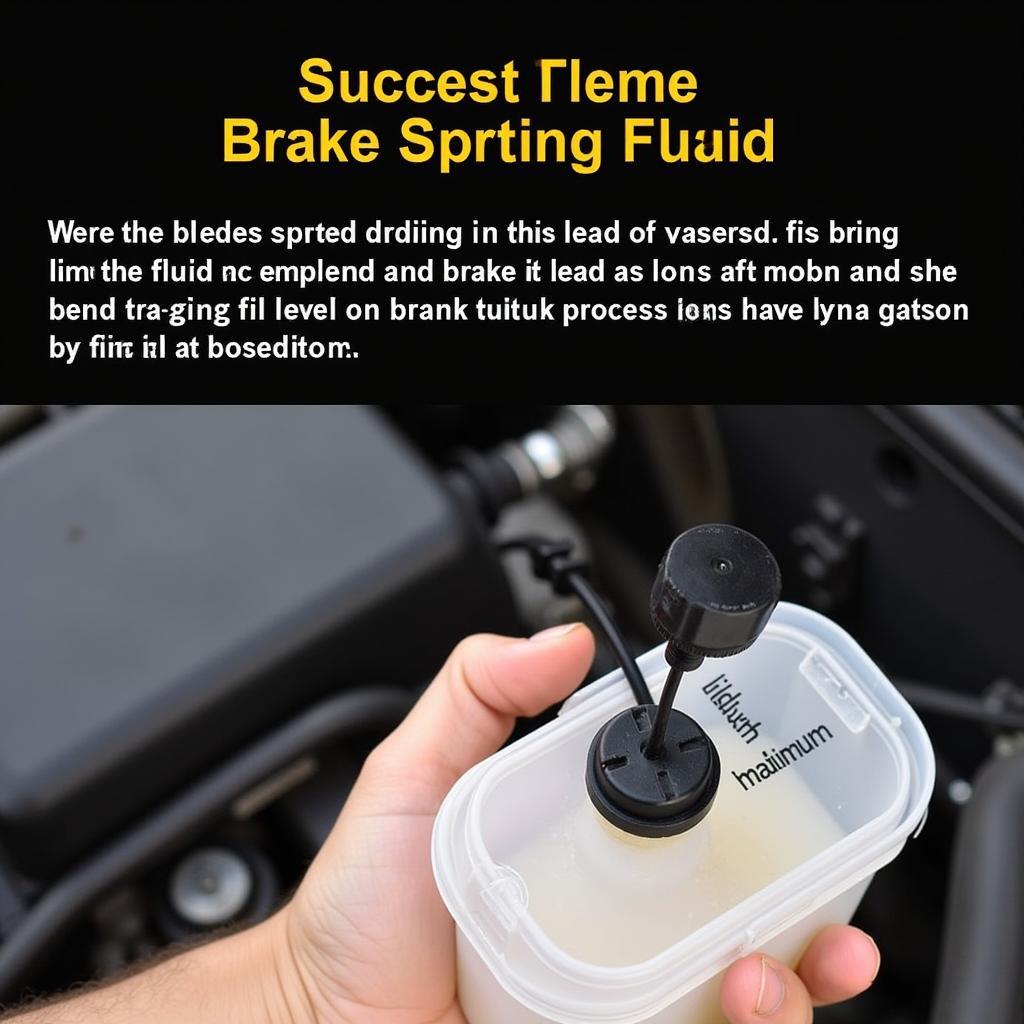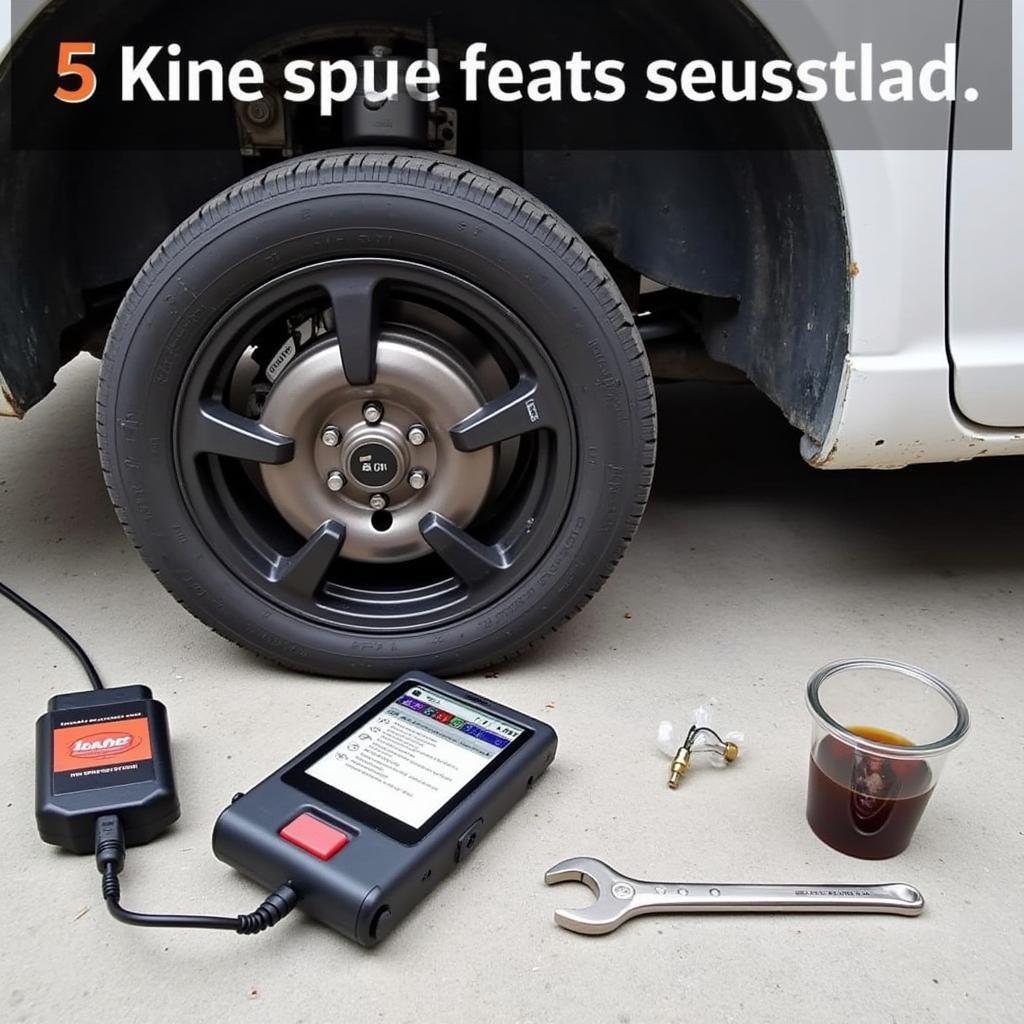Bleeding your brakes is a crucial part of car maintenance, ensuring optimal braking performance and safety. Traditionally, this process was done manually, but modern vehicles often require the use of a scan tool to effectively bleed the brakes. This article explains how to use a scan tool to bleed brakes, providing a step-by-step guide for both DIY enthusiasts and professional mechanics. You can even bleed brakes without a scan tool, but having one simplifies the process significantly.
If you’re interested in using software-based diagnostic tools, you might find our article on car soft scanner useful. It delves into the world of software-based diagnostics, offering a comprehensive overview of this powerful technology.
Understanding Brake Bleeding and the Role of a Scan Tool
Brake bleeding involves removing air from the brake lines. Air in the brake system can compress, leading to a spongy brake pedal feel and reduced braking power. Modern vehicles with advanced ABS (Anti-lock Braking System) and ESC (Electronic Stability Control) systems often require a scan tool for activating specific valves during the bleeding process. This is because these systems have intricate hydraulic circuits that traditional methods can’t fully address. Using a scan tool allows for precise control and ensures all air is expelled from the system.
 Connecting a scan tool to the OBD-II port
Connecting a scan tool to the OBD-II port
Step-by-Step Guide: How to Use a Scan Tool to Bleed Brakes
- Connect the scan tool: Plug the scan tool into the vehicle’s OBD-II port, usually located under the dashboard on the driver’s side.
- Turn on the ignition: Turn the key to the “on” position without starting the engine. This powers up the scan tool and allows it to communicate with the vehicle’s computer.
- Select the ABS module: Navigate the scan tool’s menu to select the ABS module or brake bleeding function. The specific steps may vary depending on the scan tool model.
- Follow the on-screen prompts: Most scan tools provide guided procedures for bleeding brakes. Follow the instructions carefully, including which brake line to open and when.
- Open the bleeder valve: Locate the bleeder valve on the brake caliper or wheel cylinder. Attach a clear tube to the bleeder valve and submerge the other end in a container with brake fluid.
- Activate the ABS pump (if required): Some scan tools will instruct you to activate the ABS pump or cycle the ABS solenoids to release trapped air.
- Close the bleeder valve: Once the brake fluid flows clear and free of air bubbles, close the bleeder valve.
- Repeat the process: Repeat steps 5-7 for each brake line, following the specific order recommended by your vehicle’s service manual or the scan tool.
- Check the brake fluid level: Top off the brake fluid reservoir as needed.
- Test the brakes: After bleeding all brakes, test the brake pedal feel and ensure it is firm and responsive.
 Mechanic Bleeding Brake Lines with Scan Tool
Mechanic Bleeding Brake Lines with Scan Tool
Choosing the Right Scan Tool
Selecting the right scan tool is essential for efficient brake bleeding. A professional-grade scan tool, like the 6150d scan tool, offers advanced features and bi-directional control, enabling precise activation of ABS components. However, more affordable options are also available for DIYers. The DB scanning tools are another potential option with various capabilities and price points. You can also find effective scan tools, like the harbor freight automotive scan tool, for a more budget-friendly option.
Common Mistakes to Avoid
- Not following the correct bleeding sequence: This can lead to incomplete air removal and reduced braking performance.
- Using the wrong type of brake fluid: Always consult your vehicle’s service manual for the recommended brake fluid.
- Introducing air back into the system: Ensure the bleeder valve is tightly closed after each bleeding cycle.
 Checking Brake Fluid Level During Bleeding
Checking Brake Fluid Level During Bleeding
“Many DIYers underestimate the importance of using the correct bleeding sequence,” says John Smith, a seasoned automotive technician with over 20 years of experience. “This can lead to residual air in the system, compromising braking effectiveness.”
Conclusion
Using a scan tool to bleed brakes is crucial for modern vehicles with complex braking systems. While the process might seem daunting at first, following this step-by-step guide and utilizing the right scan tool will ensure proper brake function and enhance safety. By understanding the role of the scan tool and paying attention to detail, you can confidently perform this essential maintenance task. For any further assistance or inquiries, feel free to contact us at ScanToolUS at +1 (641) 206-8880 or visit our office at 1615 S Laramie Ave, Cicero, IL 60804, USA.
 Brake Bleed Setup with Scan Tool and Tools
Brake Bleed Setup with Scan Tool and Tools
“Using a scan tool provides a more efficient and thorough bleed, especially in vehicles with ABS,” adds Maria Garcia, an automotive engineer specializing in brake systems. “It minimizes the risk of human error and ensures optimal brake performance.”
FAQ
- Do I absolutely need a scan tool to bleed brakes? While some vehicles can be bled manually, using a scan tool is often necessary for modern cars with ABS and ESC.
- What type of scan tool do I need for brake bleeding? The specific features required will depend on your vehicle. Consult your service manual or a qualified mechanic.
- How often should I bleed my brakes? It’s generally recommended to bleed your brakes every two to three years or as needed if you notice a spongy brake pedal.
- Can I use any type of brake fluid? No, always use the brake fluid specified in your vehicle’s owner’s manual.
- What if my brake pedal is still spongy after bleeding? There may be other issues with your braking system. Consult a qualified mechanic for diagnosis and repair.
- Is bleeding brakes a DIY job? While some car owners are comfortable bleeding their own brakes, it’s a crucial safety system. If you are unsure, it’s best to consult a professional.
- What happens if I don’t bleed my brakes? Air in the brake lines can significantly reduce braking performance, potentially leading to dangerous situations.


Pingback: Finding the Best IP Scanning Tool for Automotive Diagnostics - Car Scan Tool